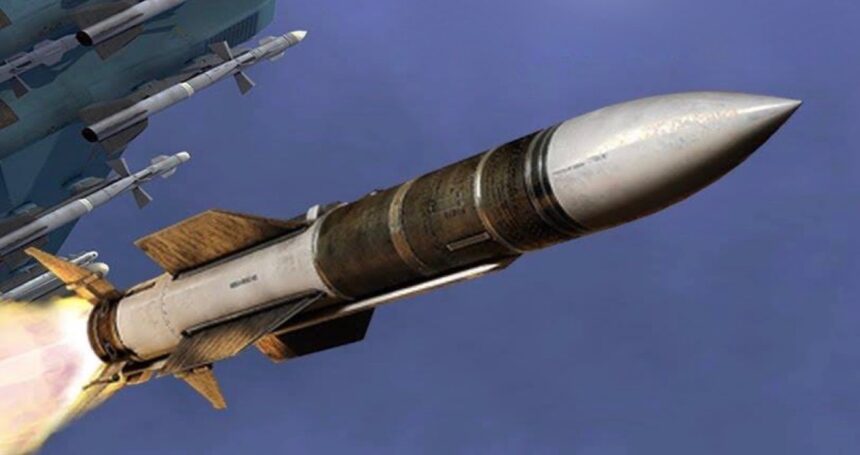China has confirmed the existence of a new hypersonic air-to-air missile following an announcement by scientists involved in the project. Details of the weapon’s final evaluations appeared last month in the Chinese-language journal Equipment Environmental Engineering, providing the first official mention of a missile that could pose an unprecedented threat to high-value military aircraft, including America’s next-generation B-21 stealth bomber.
The tests took place in an arc-heated wind tunnel at the China Airborne Missile Academy (CAMA) in Luoyang, Henan province. By heating gas with an electric arc, researchers generated superheated air flows that can reach thousands or even tens of thousands of degrees Celsius. These extreme temperatures replicate the conditions a hypersonic weapon experiences in flight. The team, led by senior scientists Cheng Gong and Huang Yimin, explained in their paper that the tunnel can operate continuously for over an hour but is so power-intensive that it is “super expensive” to run. It is generally reserved for China’s most demanding aerospace projects, such as simulating spacecraft re-entry during missions like the Tianwen-1 probe to Mars.
CAMA, affiliated with the state-owned Aviation Industry Corporation of China, is the primary developer and supplier of air-to-air missiles for the People’s Liberation Army Air Force. Testing new missile designs in the arc-heated tunnel allows engineers to verify whether key materials and systems can withstand the immense heat generated at hypersonic speeds. If operational, a weapon capable of traveling faster than five times the speed of sound would significantly extend China’s aerial strike range, threatening targets previously considered safe due to their distance or stealth characteristics.
The revelation that the hypersonic prototype has passed final wind tunnel testing signals a major step forward in China’s pursuit of cutting-edge weapons technology. Although exact capabilities remain unclear, such a missile could target and potentially disable strategic assets such as bombers, surveillance aircraft, and aerial refueling tankers. In particular, analysts point to the B-21 stealth bomber, currently undergoing trials in the United States, as an example of an aircraft that might be forced to adapt its operational tactics to evade a supersonic or hypersonic threat.
While development timelines and deployment strategies have not been disclosed, China’s disclosure through a peer-reviewed publication suggests the country is ready to demonstrate its growing expertise in hypersonic technology. The successful tests reinforce China’s ongoing efforts to match or exceed the progress of other major powers in this field. With the United States and Russia also pursuing similar capabilities, the confirmation of China’s program underscores the rapid evolution of air warfare technology and heightens global interest in the potential impact of such advanced weaponry.







